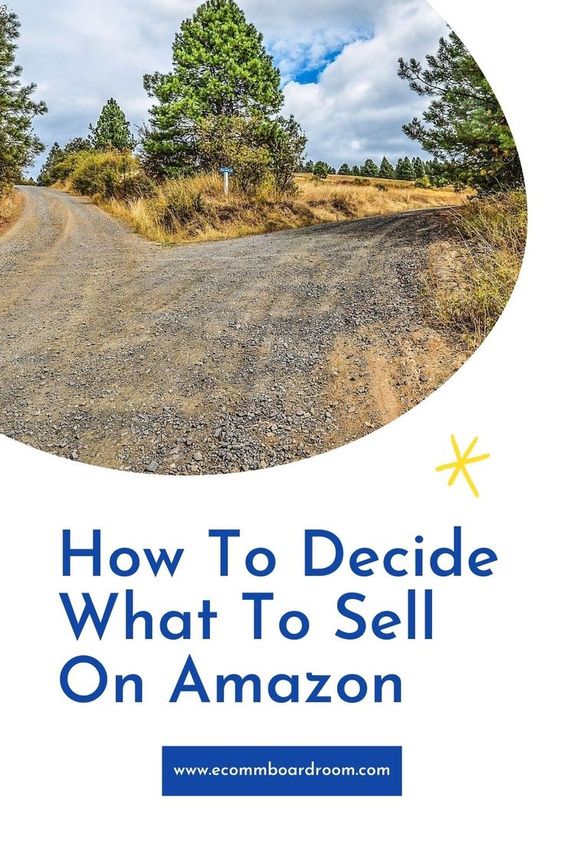Let’s talk about how to decide what to sell on Amazon. It’s one of the most fun and exciting parts of the FBA process. It’s also the part that trips people up the most. And once you head down the wrong path, it’s a hard misstep to come back from.
“Chuck, what are you talking about bro?”
Lost? No worries. If you need some introductory content about the Amazon FBA business model, I’ve got posts for that:
- The 4 Steps to Launching a Product with Fulfillment by Amazon
- 4 Key Benefits of Amazon FBA
The Big Secret
Talking to those who have heard of FBA before and have been looking into it for a while: I’m sure that one of you reading this is rubbing your hands together, deviously plotting to share your ‘Million Dollar Product’ with the world.
But most of you have no idea how to decide what to sell on Amazon – and that’s the biggest reason you haven’t made any headway with Amazon FBA. You’re paralyzed, but for good reason: it’s a big decision! Probably the biggest decision you’ll make as a part of this process.
But I have good news: You’re not alone.
Thousands of successful FBA sellers were once in your shoes. One of the best parts about embarking on the journey of becoming an Amazon seller is that you don’t need to have an ingenious product idea before you get started.
I’m going to let you in on a little known secret:
To find a successful product to sell on Amazon, all you have to do is piggyback off of the success of existing sellers, improve upon their product offering through differentiation, and capture market share.
Best of all, you don’t have to guess in order to do this; there is a science behind the secret.
Before I go any further, let me set a caveat. There are a million and one ways to turn a profit on Amazon. But from my experience, what I am about to outline is the best way, because it’s based on data driven decision-making. Now if that isn’t just the sexiest thing you’ve read all day…
The Perfect Product
Before we dive into the hot and heavy data analysis, let’s define the end goal: the Perfect Product. The Perfect Product has the following characteristics:
- High Market Demand (people are begging to buy it)
- Low/Ineffective Competition (there are only a few competitors, and they are downright incompetent)
- High Profit Margin (low cost, high sales price)
Yup, we want something with a high price tag that flies off the shelves with little resistance from customers and competitors alike.
Sadly, this is a pipe dream. We’ll never get there. But having an ideal is important: it creates a target to strive towards.
The Product Selection Strategy
To get as close to this ideal as possible, like I mentioned earlier, we are going to piggyback off the success of existing sellers. We’re also going to learn from their failures.
But how?
Many of you are familiar with the various Product Research tools out there – Helium 10, JungleScout, and Viral Launch are the biggest and the best. If you aren’t familiar, essentially these tools allow you to search through a database of Amazon products and sellers. You can learn how many units of a product are being sold, how much revenue is earned by each seller, what the review ratings for each seller are in a given product market, and much, much more.
Pretty cool, right?
There are many tutorials online showing you how to use these tools. My favorite of them is Viral Launch.
By filtering and analyzing the data in a product research tool, you can get as close to your ideal product as humanly possible. (For example: you could tell Viral Launch to show you a list of all Products that do over $10k per month in sales, but have less than 4 Star Reviews on Average.)
A product with high monthly sales volume, low average review counts, and low average review ratings indicates 1) the product is in high demand and 2) customers are generally dissatisfied with the quality of the sellers and/or the products they offer.
That’s the sweet spot.
The Importance of Differentiation
Once you’ve found a product in that sweet spot, you aren’t done! You still need to improve upon the current offerings in the market. You need to differentiate, so that:
Your product isn’t an exact copy of a competitor’s, which would guarantee a price war.
It’s more difficult for future competitors to imitate you.
You can cater specifically to your target consumer and increase your price point.
Examples of differentiating factors include: new sizes, colors, or quantities that are not currently being sold, bundling multiple products together, the addition of your company logo, uniquely designed product packaging, or a brand new product feature.
Ready, Set, Find a Product
I hope that now you have a better understanding of how thousands of sellers are succeeding every day on Amazon.
They didn’t start with an innovative product idea like Steve Jobs…They just thoroughly vetted the data, using a product research tool, to find markets that are in high demand. They then picked a product in that market and, most importantly, improved it through some form of differentiation.
And you can too.


